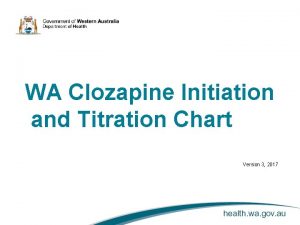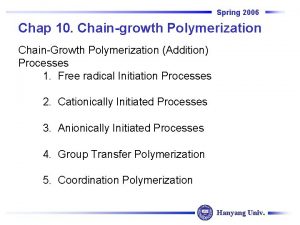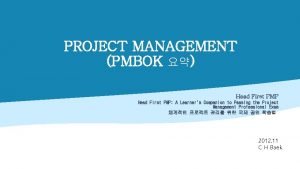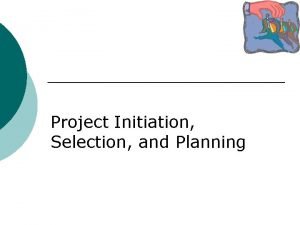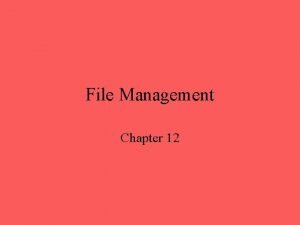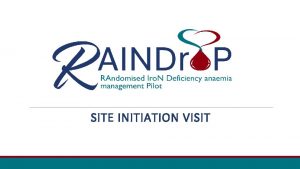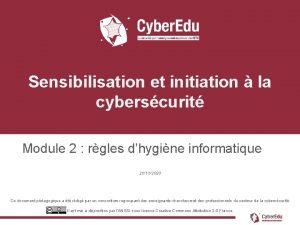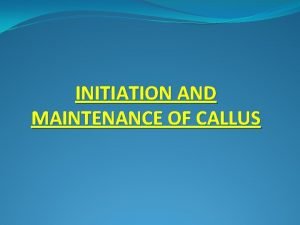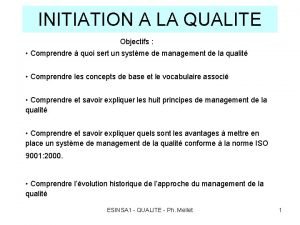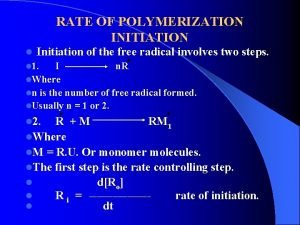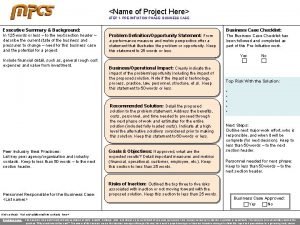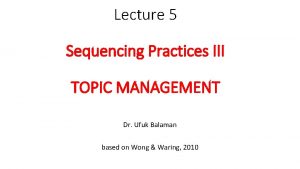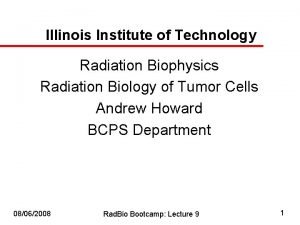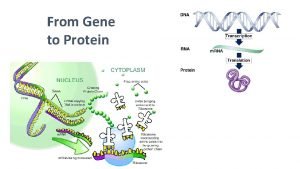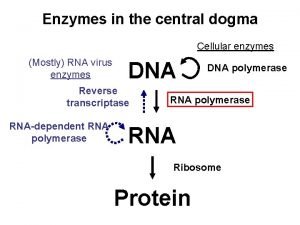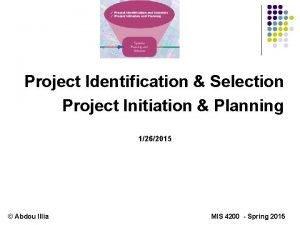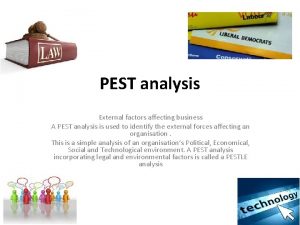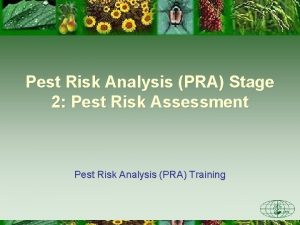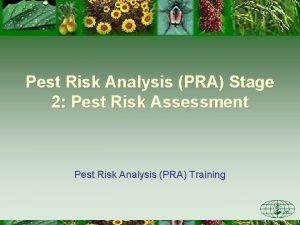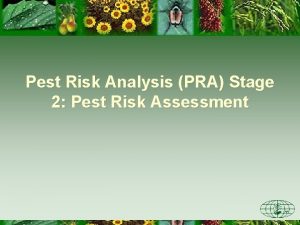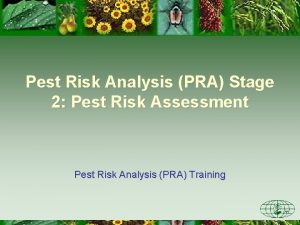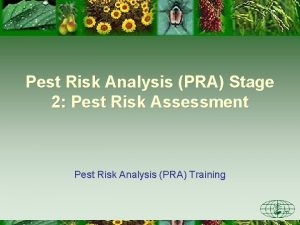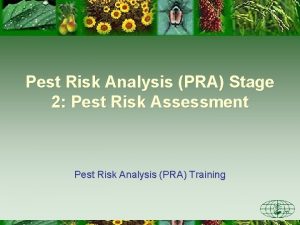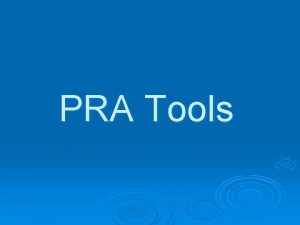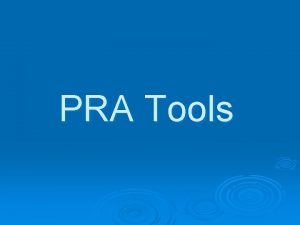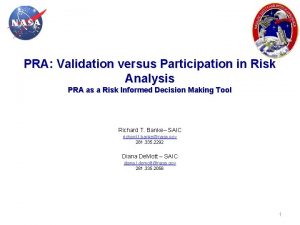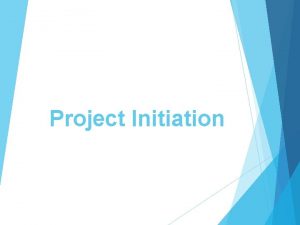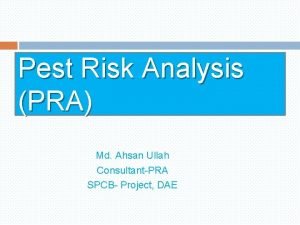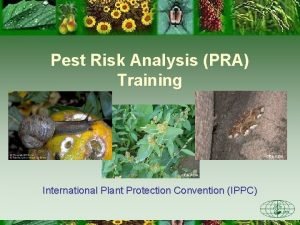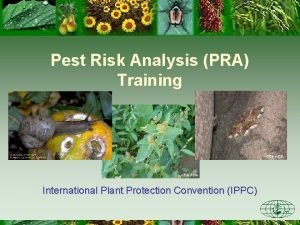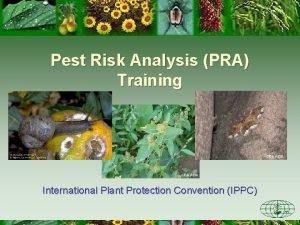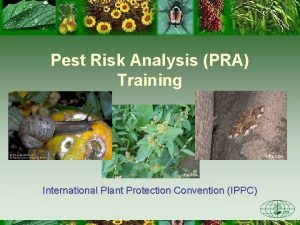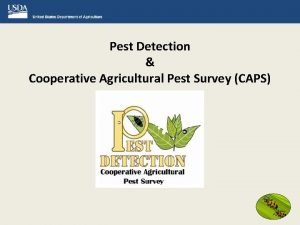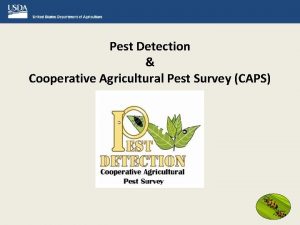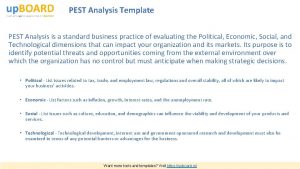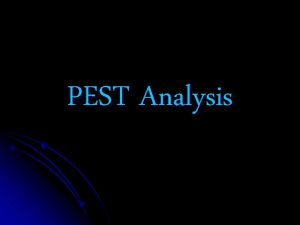Pest Risk Analysis PRA Stage 1 Initiation Pest































- Slides: 31

Pest Risk Analysis (PRA) Stage 1: Initiation Pest Risk Analysis (PRA) Training

Stages • Stage 1: Initiation • Stage 2: Pest Risk Assessment – Step 1: Pest Categorization – Step 2: Assessment of the Probability of Introduction – Step 3: Impacts – Step 4: Overall Assessment of Risk – Step 5: Uncertainty • Stage 3: Pest Risk Management

Initiation Phase • Initiation Point • Pest or pathway for a pest • Not a pest • Identification of PRA Area • End

Initiation Points • Pathway • Pest • Policy

Initiation Points • Pathway • Pest • Policy

Pathway • Any means that allow the entry or spread of a pest; could be • An imported commodity • a means of transportation or storage • packaging, or other articles associated with the commodity • a natural means of spread (e. g. , wind) • A commodity is a plant or plant product being moved for trade or other purposes

Pathway • Any means that allow the entry or spread of a pest; could be • an imported commodity • a means of transportation or storage • packaging, or other articles associated with the commodity • a natural means of spread (e. g. , wind)

Pathway • Any means that allow the entry or spread of a pest; could be • an imported commodity • a means of transportation or storage • packaging or other articles associated with the commodity • a natural means of spread (e. g. , wind) CFIA-ACIA

Pathway • Any means that allow the entry or spread of a pest; could be • an imported commodity • a means of transportation or storage • packaging or other articles associated with the commodity • a natural means of spread (e. g. , wind)

Examples • A request to import something that has not previously been imported from the proposed country of origin – Fresh mangoes from Australia; not previously approved • A different end-use is proposed for a commodity that is already being imported – Potato tubers for propagation vs. consumption • A new treatment is proposed for a commodity that is already being imported – Sulfuryl fluoride fumigation of Eucalyptus logs from South America • An interception is made – Live pests are found on a previously unidentified pathway or commodity

Initiation Points • Pathway • Pest • Policy

Pest • A pest has been intercepted on an imported commodity • A new pest has been reported in an exporting country • New hosts are discovered for a pest of concern • A pest is reported to be more injurious than previously realized • Photo Credit JM Bove, INRA

Pest • A new pest is discovered in the NPPO • A request is made to import an organism for industrial, research, biocontrol, or other purposes • An organism is discovered to be a vector for other pests

Pest • A request is made to import a new plant species or variety planting • A proposal is made to import or release a living modified organism • An organism is reported that is new to science or for which there is little information available • Photo Credit: Kenneth M. Gale

Initiation Points • Pathway • Pest • Policy

Policy • an NPPO decides to review an existing policy, phytosanitary regulation, requirements or operations – changes in agricultural production in the NPPO mean that an existing policy is no longer appropriate – an eradication program is underway and the NPPO wishes to review its progress & adjust the program, if necessary – there are repeated interceptions of regulated pests on an imported commodity for which an import policy is in place • phytosanitary regulations and import policies may be updated, as needed, for many reasons

Policy • an exporting country proposes a different approach to addressing pest risk – exporting NPPO suggests a certification program for growers in lieu of a treatment requirement, for example • a dispute arises over a phytosanitary policy – an exporting country does not agree with the importing country that a required phytosanitary measure is necessary • a treatment becomes available, or conversely, is no longer available – reduction in use of methyl bromide, for example, may necessitate review of import policies for many plants & plant products

Initiation • Initiation Point • Pest • Identification of PRA Area • Not a pest • End

What is a Pest? • A pest is “…any species, strain or biotype of plant, animal or pathogenic agent, injurious to plants or plant products” • an insect, fungus, bacterium, virus, nematode, invasive plant • any type of living organism that is harmful to plants

Determination of an Organism as a pest • Comparison to predictive indicators such as – Known to be a pest elsewhere – Shares characteristics with known pests • has similar biology & effects on plants – Found in connection with signs of injury to plants or beneficial organisms – Related to known pests – Known as a vector for known pests – Known to cause adverse effects on non-target organisms beneficial to plants

Identifying the Pest • Pests of cultivated or wild plants • Plants as pests • Biological control agents and other beneficial organisms • Living modified organisms • Organisms difficult to identify or new to science • Others

Describing the Pathway • Eucalyptus logs from South America – – – Origin? Dimensions? With or without bark? Have they been fumigated? Washed? Other treatment? Shipment method? Is the moisture content known? – – – – Origin? Fresh, frozen, dried, canned? Cleaned? Plant debris associated with shipment? Have they been fumigated? Hot water treated? Inspected? Are they packed or wrapped? Bagged? Type of containers Shipment by air, ship, passenger baggage? • Mangoes from Australia

Pathway Description • Method of production / harvesting – – – Origin Wild grown or cultivated Pest management practices Method of harvesting Pre-shipment processing, e. g. seed cleaning, de-barking, surface sterilization. . .

Pathway Description • Intended end-uses – – – Multiplication or planting Consumption Processing Industrial applications Research Others?

Example: Maize • Multiplication or planting – Planting by farmers – Breeder seed • Consumption – Feeding to animals • Processing – Manufacture of vegetable oil or other foods • Industrial applications – brewing or cosmetics production – ethanol production • Shipment in bulk • Shipment in bags or other containers • By sea or rail • By air or mail carrier • Seed or grain

Pathway Description • The more you know about the pathway, the more accurate the PRA will be and the more effective or appropriate any subsequent phytosanitary measures will be – – Ask questions Consider all aspects of pathway Get detailed descriptions Understand it

Initiation • Initiation Point • Pest • Pathway • Policy • Identification of PRA Area • The decision is made that a PRA is needed: – Pest, pathway or policy • Next steps: – Define the PRA Area – Check for previous PRAs

Definition of the PRA Area • Area in relation to which a pest risk analysis is conducted [FAO, 1995] • PRA area must be clearly defined – Whole country – Part of a country – Several countries together • This is the area which is considered in all subsequent parts of the PRA

Previous PRAs • Check for previous PRAs – Same pest or pathway – Related pest or pathway • Are any previous PRAs – Still relevant? – Up-to-date? • Benefits of checking for previous PRAs – – Efficiency Consistency Background information History of previous recommendations

End of Stage 1 • Issue is identified • Information is gathered – Organism is determined to be a pest – Pathway is described • Initiation point is documented • PRA Area is defined • Existing PRAs (if any) have been retrieved

End of Stage 1 • Organism has been determined to be a pest, PRA continues • Organism is not a pest, the PRA stops
 Knapp's experimenting stage
Knapp's experimenting stage Liquidity measures
Liquidity measures Clozapine titration chart
Clozapine titration chart Rna polymerase
Rna polymerase Separation initiation return
Separation initiation return Initiation radical reaction
Initiation radical reaction Raci 차트
Raci 차트 Importance of project initiation
Importance of project initiation Initiation à la recherche en soins infirmiers
Initiation à la recherche en soins infirmiers Site initiation visit ppt
Site initiation visit ppt Contoh inisiasi proyek
Contoh inisiasi proyek Initiation phase of home visit
Initiation phase of home visit In file organization a fixed format is used for records
In file organization a fixed format is used for records Jeanine
Jeanine Light vs darkness archetype
Light vs darkness archetype Site initiation visit
Site initiation visit Sensibilisation et initiation à la cybersécurité
Sensibilisation et initiation à la cybersécurité Initiation and maintenance of callus culture
Initiation and maintenance of callus culture Initiation à la qualité
Initiation à la qualité L'initiation
L'initiation Initiation à la démonstration 5ème
Initiation à la démonstration 5ème Ccc 1326
Ccc 1326 Separation initiation return
Separation initiation return What is the revelation in the hero's journey
What is the revelation in the hero's journey Peace amplifier
Peace amplifier Pre initiation phase project management
Pre initiation phase project management Topic initiation
Topic initiation Initiation promotion progression
Initiation promotion progression Simultaneous transcription
Simultaneous transcription Central dogma
Central dogma Project identification and selection
Project identification and selection Tesco pest analysis
Tesco pest analysis


